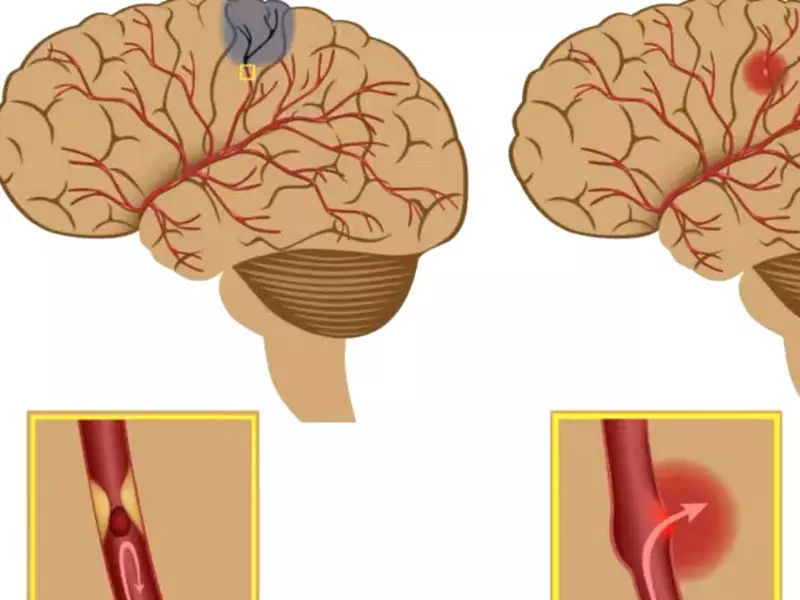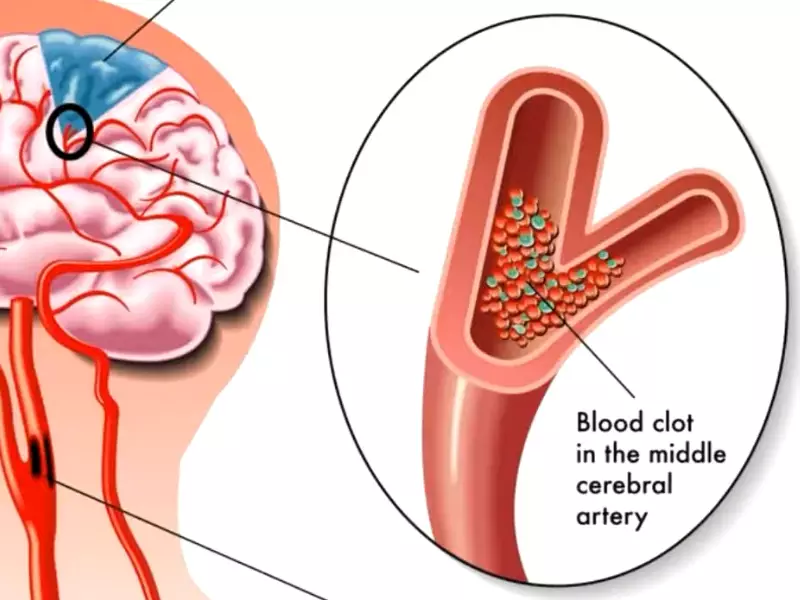Cardiovascular diseases and conditions significantly impact global health, leading to millions of cases and medical interventions each year. Among these, aneurysms and blood clots are prevalent issues that, while distinct in their nature, both pose serious risks to individuals. Their differences, often misunderstood or overlooked, are crucial in the diagnosis, treatment, and prevention strategies employed by healthcare professionals.
An aneurysm is a bulge or ballooning in the wall of an artery, which can lead to life-threatening situations if it ruptures. Blood clots, however, are clumps of blood that have changed from a liquid to a solid state, potentially blocking blood vessels and preventing the flow of blood to vital organs. Understanding these differences is essential for effective medical intervention and prevention.
This article aims to shed light on the distinct characteristics, causes, symptoms, and treatments of aneurysms and blood clots. By clarifying these conditions, individuals can better comprehend their risks, recognize symptoms early, and seek appropriate medical care, ultimately leading to improved health outcomes and prevention of severe complications.

Aneurysm Explained
What is an Aneurysm?
An aneurysm is a bulge or ballooning in the wall of an artery. Arteries are blood vessels that carry oxygen-rich blood from the heart to other parts of the body. When an area of an artery wall weakens, it can swell and form an aneurysm. This condition can occur in any part of the body but is most common in the brain and the aorta, the body’s main artery.
Causes of Aneurysms
The common causes of aneurysms include:
- High blood pressure: Constant high pressure in the arteries can weaken the artery wall.
- Atherosclerosis: The buildup of plaque in the arteries can lead to aneurysms.
- Genetic factors: Some people inherit the tendency to develop aneurysms.
- Infection: Infections can weaken artery walls.
- Trauma: Injury to an artery wall can result in an aneurysm.
Types of Aneurysms
Brain Aneurysms
A brain aneurysm occurs in an artery in the brain. It can leak or rupture, causing bleeding into the brain (hemorrhagic stroke).
Aortic Aneurysms
An aortic aneurysm occurs in the aorta. This type can be further divided into:
- Thoracic aortic aneurysms: Occur in the chest area.
- Abdominal aortic aneurysms: Occur in the abdomen.
Symptoms of Aneurysms
Often, aneurysms don’t show symptoms until they rupture. When symptoms do occur, they may include:
- Pain: Area-specific pain, depending on the aneurysm’s location.
- Rupture signs: Sudden, severe headache (brain aneurysm) or intense back pain (aortic aneurysm).
Risk Factors for Aneurysms
Risk factors for developing an aneurysm include:
- Age: Risk increases with age.
- Smoking: Significantly increases the risk.
- High blood pressure: Major risk factor.
- Family history: Genetic predisposition plays a role.
Treatment for Aneurysms
Treatment options vary based on the aneurysm’s size, location, and risk of rupture:
- Monitoring: Small, low-risk aneurysms may only require regular check-ups.
- Medication: To lower blood pressure and reduce rupture risk.
- Surgery: For high-risk aneurysms, procedures like clipping or coiling (brain) or grafting (aorta) are performed.
Blood Clot Basics
What is a Blood Clot?
A blood clot is a clump of blood that has changed from a liquid to a solid state. While clotting is a necessary process that prevents excessive bleeding when you are injured, clots can be dangerous when they form abnormally inside veins or arteries.
Causes of Blood Clots
Common causes of blood clots include:
- Immobility: Extended periods of not moving can slow blood flow and cause clots.
- Surgery: Risk increases after surgery, especially with orthopedic surgeries.
- Certain medications: Some can increase clotting risk.
- Smoking: Affects blood flow and clotting mechanisms.
- Chronic diseases: Conditions like cancer and inflammatory diseases can increase risk.
Types of Blood Clots
Deep Vein Thrombosis (DVT)
DVT is a clot that forms in a deep vein, usually in the leg. It can cause leg pain or swelling but sometimes occurs without symptoms.
Pulmonary Embolism (PE)
A PE occurs when a clot breaks loose and travels through the bloodstream to the lungs. It is a serious condition that can cause chest pain, shortness of breath, or even death.
Symptoms of Blood Clots
Symptoms of blood clots depend on the clot’s location:
- DVT: Swelling, pain, redness in the leg.
- PE: Sudden shortness of breath, chest pain, coughing up blood.
Risk Factors for Blood Clots
Risk factors include:
- Age: Older adults are at higher risk.
- Prolonged immobility: Such as long flights or bed rest.
- Family history: Genetic factors can increase risk.
- Pregnancy: Increases the pressure in the veins.
Treatment for Blood Clots
Treatment aims to prevent the clot from getting bigger and preventing new clots:
- Anticoagulants: Medications that thin the blood.
- Compression stockings: For DVT, to prevent swelling and increase blood flow.
- Surgery: In severe cases, such as to remove a PE or install a filter in the vein.

Key Differences Between Aneurysms and Blood Clots
Nature of Conditions
Aneurysm vs. Clot: Understanding the Basics
An aneurysm is a bulge in the wall of an artery, which can potentially burst, leading to dangerous bleeding. A blood clot, on the other hand, is a solid collection of blood that forms inside the blood vessels or heart. While aneurysms develop in arteries weakened by disease or injury, clots can form in both veins and arteries, often as a result of slow blood flow, injury to a blood vessel, or certain medical conditions.
Causes and Risk Factors
Differentiating Causes and Risks
Aneurysms often result from artery wall weakening due to factors like high blood pressure, cholesterol deposits, smoking, and genetic predispositions. Blood clots may form due to prolonged immobility, surgery, certain medications, smoking, and conditions like cancer or autoimmune diseases. Both conditions share some risk factors, but their causes highlight critical differences in prevention and treatment approaches.
Symptoms and Signs
How Symptoms Vary Between the Two
Aneurysm symptoms can be silent until a rupture occurs. However, large aneurysms may cause pain or a pulsating feeling in the area. In contrast, symptoms of blood clots vary depending on the clot’s location: DVT might present as leg pain and swelling, while a PE could cause chest pain and difficulty breathing.
Treatment Approaches
Contrasting Treatments
Aneurysm treatments focus on preventing rupture through monitoring, medication to lower blood pressure, or surgery to repair the weakened artery. Blood clot treatments aim to prevent the clot from enlarging and new clots from forming, using anticoagulants, compression stockings, or in severe cases, thrombolytic therapy to dissolve the clot.
Prevention Strategies
Lifestyle Changes
Habits to Reduce Risk
To minimize the risk of both aneurysms and blood clots, adopting healthy lifestyle habits is essential:
- Quit smoking: Smoking is a significant risk factor for both conditions.
- Maintain healthy blood pressure and cholesterol levels: Through diet, exercise, and medication if needed.
- Stay active: Regular exercise can improve circulation and reduce the risk of clot formation.
Regular Check-Ups
Importance of Medical Monitoring
Regular medical check-ups can help detect risk factors like high blood pressure or cholesterol levels early. For individuals at high risk of aneurysms or blood clots, more frequent monitoring may be necessary to prevent complications.
Awareness and Education
Knowing Signs and When to Seek Help
Awareness of the signs and symptoms of both aneurysms and blood clots can be life-saving. Knowing when to seek medical help is crucial:
- For aneurysms, sudden, severe headaches, pain, and symptoms of a stroke (like weakness on one side of the body) require immediate attention.
- For blood clots, unexpected swelling, pain in the leg or chest, shortness of breath, or any sudden change in health status should prompt a visit to the doctor.
Frequently Asked Questions
What is an aneurysm?
An aneurysm occurs when part of an arterial wall weakens, leading to a significant bulge or ballooning. This condition can become extremely dangerous if the aneurysm ruptures, causing internal bleeding and potentially life-threatening consequences.
How do blood clots form?
Blood clots form when blood transforms from a liquid to a thicker, gel-like state, which can occur under various circumstances, including lack of movement, certain medical conditions, or after surgery. This process is meant to prevent excessive bleeding but can become problematic when clots form undesirably inside veins or arteries.
Can aneurysms be prevented?
While not all aneurysms can be prevented, reducing risk factors such as controlling high blood pressure, quitting smoking, and maintaining a healthy lifestyle can significantly lower the risk of developing an aneurysm.
What are the treatment options for blood clots?
Treatment for blood clots often involves anticoagulants or blood thinners, which reduce the blood’s ability to clot. In more severe cases, thrombolytics to dissolve clots, or surgical intervention, may be necessary.
Conclusion
Understanding the differences between aneurysms and blood clots is more than an academic distinction; it’s a critical component of personal health management. Recognizing the signs, symptoms, and risk factors associated with each can lead to earlier detection, more effective treatment, and better overall outcomes. Awareness and education are key in navigating these complex health issues.
Ultimately, while the conditions differ significantly in their nature and treatment approaches, the importance of timely medical intervention cannot be overstated. By fostering a deeper understanding of these conditions, individuals are better equipped to engage in preventive measures, seek prompt medical attention when necessary, and support the global effort to reduce the impact of cardiovascular diseases.
